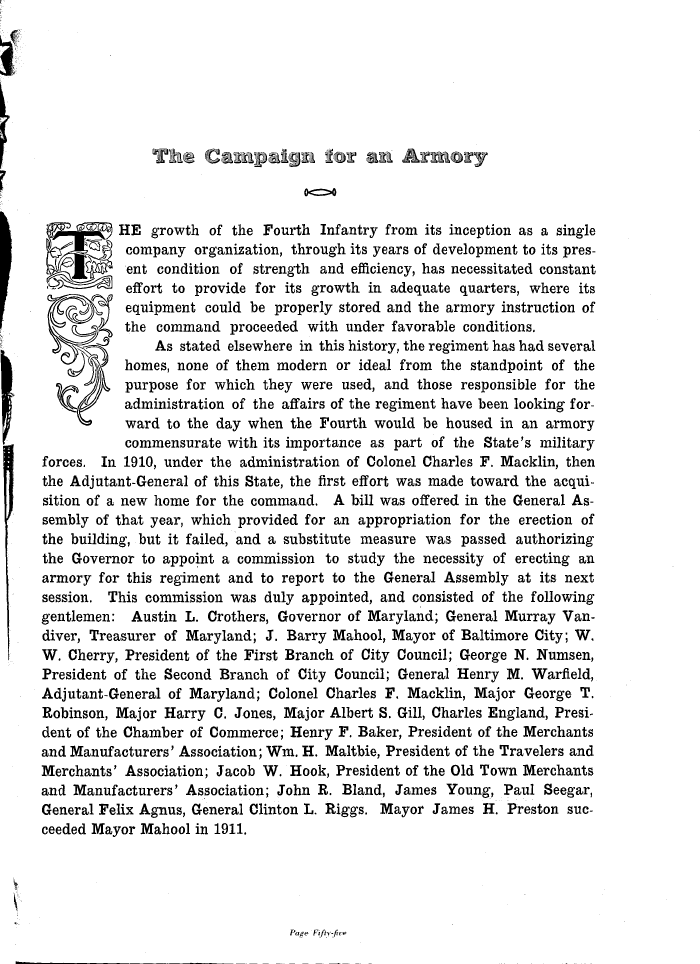 |
||||
 |
||||
| The Campaign for an Armory HE growth of the Fourth Infantry from its inception as a single company organization, through its years of development to its present condition of strength and efficiency, has necessitated constant effort to provide for its growth in adequate quarters, where its equipment could be properly stored and the armory instruction of the command proceeded with under favorable conditions. As stated elsewhere in this history, the regiment has had several homes, none of them modern or ideal from the standpoint of the purpose for which they were used, and those responsible for the administration of the affairs of the regiment have been looking forward to the day when the Fourth would be housed in an armory commensurate with its importance as part of the State's military forces. In 1910, under the administration of Colonel Charles F. Macklin, then the Adjutant-General of this State, the first effort was made toward the acquisition of a new home for the command. A bill was offered in the General Assembly of that year, which provided for an appropriation for the erection of the building, but it failed, and a substitute measure was passed authorizing the Governor to appoint a commission to study the necessity of erecting an armory for this regiment and to report to the General Assembly at its next session. This commission was duly appointed, and consisted of the following gentlemen: Austin L. Crothers, Governor of Maryland; General Murray Van-diver, Treasurer of Maryland; J. Barry Mahool, Mayor of Baltimore City; W. W. Cherry, President of the First Branch of City Council; George N. Numsen, President of the Second Branch of City Council; General Henry M. Warfield, Adjutant-General of Maryland; Colonel Charles F. Macklin, Major George T. Robinson, Major Harry C. Jones, Major Albert S. Gill, Charles England, President of the Chamber of Commerce; Henry F. Baker, President of the Merchants and Manufacturers' Association; Wm. H. Maltbie, President of the Travelers and Merchants' Association; Jacob W. Hook, President of the Old Town Merchants and Manufacturers' Association; John R. Bland, James Young, Paul Seegar, General Felix Agnus, General Clinton L. Riggs. Mayor James H. Preston succeeded Mayor Mahool in 1911. Page Fifty-fire |